- Home
- Tony Hillerman
The Fallen Man jlajc-12 Page 24
The Fallen Man jlajc-12 Read online
Page 24
I. How a white man such as myself. . .
I
f my experience is typical the Frequently Asked Questions faced by writers at book signings are “Where do you get the ideas?” and
“When do you write?” In my case, the first question is often how did a white man such as myself get acquainted with the Navajos and their traditional culture. Answering that requires a brief biographical recap, eight grades in an Indian school, Indian playmates, growing up knowing that the us of the us-and-them formula put us hardscrabble rural folks, Indians and whites, in the same category
— contrasted with urban folks who had money, or so it seemed to us. In other words, I had no trouble at all feeling at home with Navajos. They were the folks I grew up with.
(“The FAQs,” p. 251, HarperCollins hardcover edition.)
II. A sort of life-changing weirdness that never went away
A
nother incident I’ve never forgotten was directly useful in a novel and had a lot to do with making me dead serious about trying to become a novelist. It happened in Santa Fe.
The call from the deputy warden was directly to the point. Robert Smallwood, scheduled to die that evening for a cold-blooded double murder, had asked to talk to me. If I wanted to see him, be at the prison main entrance at two p.m. “Just me?” I asked. “You and John Curtis,” he said. “Curtis said he’d come.”
Curtis was manager of the Santa Fe bureau of the Associated Press but we were friends as well as competitors and made the fifteen-mile drive from Santa Fe to what was then the “new prison” in his car. Smallwood was the news story of the day. At midnight he would become the first person executed in New Mexico’s shiny new gas chamber. He had been condemned for murdering a newly-wed couple who had stopped to help him with a stalled (and stolen) car and he was a suspect in a list of other unsolved homicides. Such a death row visit was not new to me, and certainly not to Curtis, who was years my senior in the reporting business. We didn’t expect much. Smallwood would reassert his innocence, or (better for our purposes) he’d admit the deed, proclaim his sorrow, and ask us to plead with the governor for a stay of execution. Or he would promise to reveal the identity of the actual killer. Who could guess? Neither of us expected a big story and we didn’t get one.
Instead, I got a notion implanted in my brain; a sort of life-changing weirdness that never went away. It was the thought that fiction can sometimes tell the truth better than facts. After listening to what Smallwood had to say I tried to write a short story, and kept trying until I finally got one written. It was bad. I didn’t try to get it published. But I kept it and Smallwood remained in my memory until, years later, I needed him. Then he became Colton Wolf in People of Darkness [1980]. Those who have read that book already know what Curtis and I heard on death row of Cell Block 3 that afternoon.
(“The FAQs,” pp. 256-257.)
III. Why my books tend to be noted for glitches
W hile finishing The Fly on the Wall
[1971] I had come to a couple of conclusions. It was pretty good, including two or three top-notch scenes, but it wasn’t likely to be heralded as the Big Book I’d intended. Second, the urge to go back to Officer Joe Leaphorn and the Dineh and do that right had persisted.
[Harper & Row editor] Joan Kahn’s demands for improvement of Fly were more modest than they had been for Blessing [ The Blessing Way, 1970] — mostly involving revision of the first chapter in which my hero was writing a political column crammed with names. She also wanted light cast into a couple of foggy corners and better motivation a time or two. But somehow this queen 94 of 102
15/03/2008 19:57
TheFallenMan
file:///C:/Documents%20and%20Settings/Floop/Local%20Settings/Te...
of mystery editors missed an awful boo-boo, and so did I, and so did the copy editor, and the book reviewers. Then one day with the book already out in paperback I ran into an old reporter friend from my Oklahoma City days whom I had used, thinly disguised, in the plot. Had he read it? Yep. What did he think of it? Okay, he said, but why did you have the hero [reporter John Cotton] going barefoot through those last chapters? What did he mean? Remember, he says, you have him remove his shoes and leave them atop that game department display so he won’t make any noise? Yes, I remembered. Then he escapes through a window, climbing out into the sleet storm and —
And now I remember. My hero never had a chance to recover the shoes. He walks blocks through the sleet to his lady friend’s house, calls a cab, visits the Democratic Party state chairman, etc., all in sock feet.
Alas, my books tend to be noted for glitches, where I have characters drive south when I meant north, for example, or change the name of characters in the middle of a chapter, etc.
(“Back to the Dineh,” pp. 281-282.)
IV. Jim Chee, born of the marriage of Art and Greed
S
atisfaction of [my agent’s and editor’s] desire that I produce the breakout book remained far in the future. First I had to create Jim Chee, a second Navajo police officer, and then be inspired to work him in tandem with Leaphorn — as a sort of uneasy team. I have been known to claim that Chee was the product of an artistic need, and that is partly true. But since I have promised nothing but the truth in these recollections I will admit to you my fondness for Joe Leaphorn was undermined by the knowledge that I only owned part of him, having signed away TV rights. This new book, People of Darkness [1980], would be set on the so-called Checkerboard Reservation on the eastern margin of the Big Reservation. It appealed to me story-wise because there the nineteenth-century railroad moguls had been given blocks of reservation land as a reward for laying transcontinental track, and more of the Navajo country had been divided off into alternate square miles of public land ownership. Not surprisingly, this had odd sociological effects — a mixture of Navajo with every type of unhyphenated American and a dazzling variety of religious missions — from the two versions of the Native American Church, though Catholic, Mormon, Presbyterian, Mennonite, Southern Baptist, and a galaxy of fundamentalist Evangelical churches.
I had started this book with Leaphorn as the central character, but by now my vision of him was firm and fixed. Leaphorn, with his master’s degree in anthropology, was much too sophisticated to show the interest I wanted him to show in all this. The idea wasn’t working. This is the artistic motive. Behind that was disgruntlement. If any of my books ever did make it into the movies, why share the loot needlessly? Add greed to art and the motivation is complete.
Thus I produce Jim Chee, younger, much less assimilated, more traditional, just the man I needed. I modeled him after nobody in particular — a sort of composite of ten or twelve of those idealistic students of the late 1960s.
(“Breakout Book,” pp. 296-297.)
V. “Why did you change Leaphorn’s name to Chee?”
G etting a publishable book written requires a lot of luck.
Luck, for example, caused me to put Chee and Leaphorn in the same book. I was on a book tour promoting the third of the books in which Jim works alone [TK]. A lady I’m signing a book for thanks me and says:
“Why did you change Leaphorn’s name to Chee?”
It took a split second for the significance to sink in. A dagger to the heart. I stutter. Search around for an answer, and finally just say they’re totally different characters. “Oh,” says she, “I can’t tell them apart.” I am sure there are writers self-confident enough to forget this. What does this old babe know? But that was not to be for me. Like what St. Paul called his “thorn in the flesh,” it wouldn’t go away. I decided to put both characters in the same book to settle the issue for myself. I tried it in Skinwalkers [1986]. It worked so well I tried it again in A Thief of Time [1988]. Hurrah! It was the breakout book!
(“Breakout Book,” pp. 298-299.)
VI. This FBI tendency to charge in and take over where it knows not what it’s doing I n writing Hunting Badger
[1999] I took advantage of this
FBI tendency to charge in and take over where it knows not what it’s doing. While I based it on an imaginary robbery of the Ute Mountain gambling casino and the subsequent search of the Four Corners canyon country for the bandits I had my fictional Navajo police remembering, with a mixture of amusement and dread, a real manhunt of the previous year.
They recall how the federals had swarmed in literally by the hundreds when three local tough guys stole a water truck, murdered Dale Claxton, the local officer who tried to arrest them, and then disappeared into the Four Corners emptiness. The federals set up a hunt headquarters into which information from citizens and local cops was funneled — but from which information was slow to 95 of 102
15/03/2008 19:57
TheFallenMan
file:///C:/Documents%20and%20Settings/Floop/Local%20Settings/Te...
escape out to the crews searching the mesas and canyons. Thus Search Team A would find itself following Search Team B, etc., tracks found in the dust would be fanned away by federal helicopters coming in to take a look, and so forth. One of the old pros in the Navajo tribal police told me that his search team was informed early that the FBI has taken command, that this pretty well eliminated any hope of an early capture, but since the FBI would need a scapegoat for the failure, they should be careful not to make any mistakes.
And so it went that long summer. The federals ordered the evacuation of Bluff. Locals found the body of one of the suspects and the feds declared him a suicide. After months of floundering around, the feds faded away and went back to whatever they do. A Navajo found the body of another suspect, with no fed available to proclaim the suicide. The third killer, as far as anyone knows, is still out there somewhere. Net result of this epic fiasco is the unavenged murder of a highly regarded policeman, the wipeout of tourist season revenues for the folks of Montezuma Creek, Bluff, Mexican Hat, etc., and the depletion of overtime budgets of every police agency in the Four Corners country.
(“Breakout Book,” pp. 302-303.)
VII. Location scouting
I had my first close look at the San Juan River’s draining system when I was trying to find a setting for A Thief of Time [1988] —
which turned out to be that elusive breakout book. Specifically, I needed an isolated Anasazi ruin where my characters could do their illicit artifact digging unobserved and where I intended to have one of them murder the other one. I mentioned this to Dan Murphy, a naturalist with the National Park Service. Murphy knew of a place that met my needs, reachable down the San Juan River from Bluff. Better still, Murphy knew of a generous fellow with a deep interest in archaeology who had been helping finance some research on the Navajo Reservation. He was taking friends on a float trip into Anasazi country and Murphy was going along as the flora-fauna authority. If I’d tell campfire tales of mythology and culture he could get me a free ride to the places I should see.
Journalists are not inclined to turn down freebies; such perks compensating for the poverty-line pay scales newspapers paid. And I was bogged down in the first chapters of ATOT
because I couldn’t visualize the places where a lot of it would happen. I have always needed to lean back in my chair and pull up a memory of the sites I am writing about to feel comfortable with the description.
The place Dan Murphy knew I needed was in the wall of a mesa overlooking Chinle Wash — a few miles up from where the wash dumps runoff water into the San Juan and a couple of hundred meandering miles from the place it emerges from Canyon de Chelly.
Back in 1988 when my memory of this was fresh and green, I wrote a piece published in the July 1989 edition of Audubon magazine. I have just reread it and found that I wrote as well then as I do now — alas, perhaps better. Therefore, I will plagiarize myself and take you to our campfire at the juncture of Chinle Wash and the San Juan.
“I begin collecting the kinds of impressions my victim would make as she arrived at this place. She would make the trip secretly and at night, since the dig would be illegal. She would be burdened with the sort of nervousness law-abiding people feel when they are breaking the rules. Still, she would be stirred by the evening as I am stirred. Violet-green swallows are out patrolling for insects. A beaver, looking old and tired, swims wearily up river, keeping out of the current and paying no more attention to me than he would to a cow.
“The song of frogs comes from somewhere up the wash. The rising moon lights the top of the cliff and a coyote and his partner began exchanging conversation far above on the Nokaito Bench. The nighthawks and swallows retire for the night and are replaced by squadrons of little bats. They flash through the firelight, making their high pitched little calls. I filed all of this in my memory.” When I am back at my computer my soon-to-be murdered anthropologist will be experiencing all this, saving wear on my imagination.
The next morning Murphy took me up Chinle Wash. We passed a Navajo pictograph — a man shooting a bow at a black-hatted horseman who was firing a pistol at the Navajo. Nearby is an elaborate larger-than-life Anasazi pictograph of a figure standing behind a huge reddish shield that looked so much like the chest protector of an umpire that the river people called this fellow
“Baseball Man.” About here the climb began — first from the floor of the wash to a flat expanse some thirty feet higher, and then another, steeper climb to an even flatter expanse of exposed sandstone. This spread away to the cliff walls of which support the vast igneous roof of Nokaito Beach.
Murphy pointed, said, “Over there,” and added that he wanted me aware of how these people hid themselves in this empty world.
We moved along the cliff, and past another gallery of pictographs, one of which depicted Kokopela, resting on his humped back playing his flute between his raised legs. Anthropologists believe he is a fertility figure a lot like the Greek Pan and the hump he carries represents a sack of seeds. Whoever he is, he stimulated my imagination. I began thinking how spooky it would be if my foredoomed anthropologist, already frightened, began hearing the sound of flute music approaching in the darkness. With the problem of working flute music into the plot still on my mind we turned a little corner and we were there. In the towering wall of the mesa nature had formed a cavernous amphitheater in the cliff, some fifty feet deep, a bit wider, and maybe seventy feet from floor to ceiling. A live seep high up the cliff supplied enough water to grow a lush (by desert standards) assortment of ferns and moss here and to feed a shallow basin perhaps twelve feet across and eight inches deep on the stone alcove floor. Tiny frogs are all around it.
On a ledge a few feet above this pool the Anasazi family had built its house — its roof gone but the walls, protected here from wind and weather, almost intact. At the mouth of the alcove footholds had been cut into the cliff leading upward to a higher shelf where an even smaller stone structure stood. A lookout point, Murphy guessed, or a last-chance stronghold if danger trapped them.
96 of 102
15/03/2008 19:57
TheFallenMan
file:///C:/Documents%20and%20Settings/Floop/Local%20Settings/Te...
While we rested in the cool shade, I dumped the already written first chapter of A Thief of Time. A quite different book was taking shape out of what I’d seen on this raft trip. And here’s the way I thought the new first chapter would go: By now the victim has definitely become female. She has reached this proscribed ruins just as Murphy and I did, but at twilight. She has seen Kokopela’s pictograph, the ruins, the pond, and the little frogs around it. She has decided she will sleep and start her dig with daylight. She notices the frogs seems to jump toward the water but never reach it, investigates, finds that scores of them have been tethered with yucca strings to twigs stuck into the ground. This seems cruel, sadistic, and totally insane to her and since the frogs are still healthy, done recently. The mad perpetrator must be near. Then she hears the sound of a flute. Thinks of Kokopela.
Listens. Recognizes the melody of “Hey, Jude.” Then she sees figure walking into the darkness toward her. End of first chapter.
(“Breakout Book,” pp. 304-307.)
Skinwalkers Becomes a MYSTERY!
A press release from PBS:
S kinwalkers
is the first MYSTERY! title in the show’s twenty-two-year history written by an American author and set in the United States.
The project teams Robert Redford’s Wildwood Enterprises with PBS, the Corporation for Public Broadcasting, and the UK’s Carlton Television.
“The Chee and Leaphorn mystery series has been a passion project of mine for fourteen years,” said Executive Producer Robert Redford. “The chance to elevate the issues surrounding our Native American culture and to do it through the vehicle of solid entertainment is our hope and purpose. I am very happy to see Skinwalkers find its perfect home on PBS.” Directed by Chris Eyre ( Smoke Signals) from a script by Jamie Redford, the mystery stars Adam Beach ( Smoke Signals) and Wes Studi ( Dances with Wolves) as Native American detectives Jim Chee and Joe Leaphorn of the Navajo Tribal Police. Skinwalkers is one of fourteen Hillerman mysteries featuring these characters, including the recently published The Wailing Wind.
“We’re proud to bring Tony Hillerman’s unique talent to television audiences,” adds MYSTERY! Executive Producer Rebecca Eaton. “Viewers are going to love Skinwalkers
for the same reasons we do: its vivid depiction of Native American culture, strong, complex characters, and edge-of-your-seat suspense.”
Skinwalkers premiered November 24, 2002.
Profile of the Navajo Nation
Demographics:
According to the 2000 U.S. Census, 298,197 individuals claimed Navajo ethnicity. Of that total, as of November 30, 2001 (Navajo Nation Vital Records Office), 255,543 are enrolled members of the Navajo Nation, placing the Navajo Indian Tribe as the largest federally recognized tribe in the United States.
According to the 2000 U.S. Census, of the 180,000 residents residing on Navajo Nation tribal land, 168,000 are Navajo enrolled members, with the remaining being non-members who reside and work within the Navajo Nation. Another 80,000 Navajos reside near or within “border towns” of the Navajo Nation — Farmington, N.M.; Gallup, N.M.; Grants, N.M.; Page, AZ; Flagstaff, AZ; Cortez, CO; Winslow, AZ; Holbrook, AZ; and Blanding, UT. The remaining Navajos, enrolled and non-enrolled, reside in metropolitan centers across the United States.

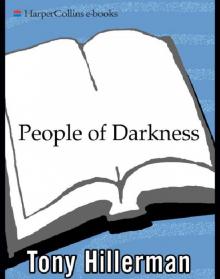 People of Darkness
People of Darkness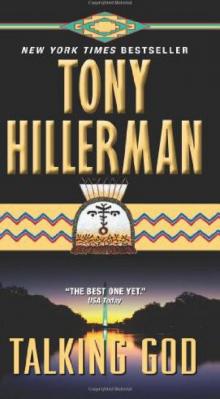 Talking God jlajc-9
Talking God jlajc-9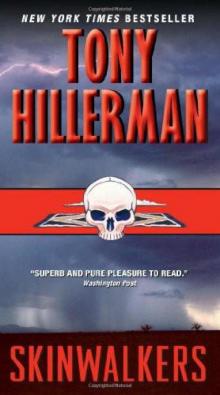 Skinwalkers jlajc-7
Skinwalkers jlajc-7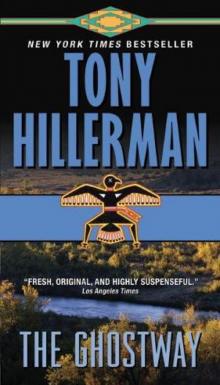 The Ghostway jlajc-6
The Ghostway jlajc-6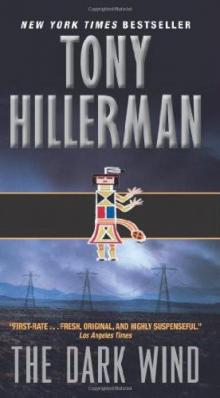 The Dark Wind jlajc-5
The Dark Wind jlajc-5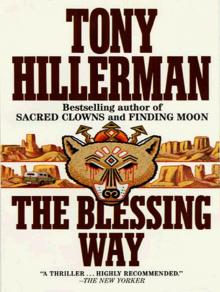 The Blessing Way
The Blessing Way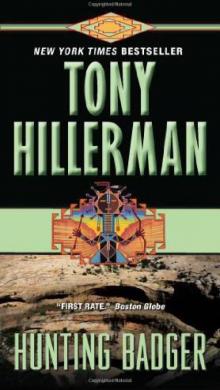 Hunting Badger jlajc-14
Hunting Badger jlajc-14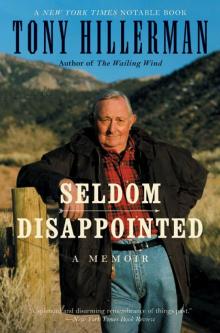 Seldom Disappointed: A Memoir
Seldom Disappointed: A Memoir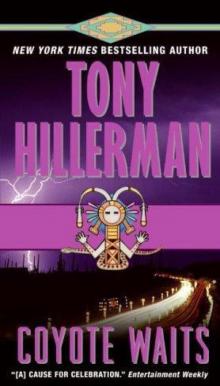 Coyote Waits jlajc-10
Coyote Waits jlajc-10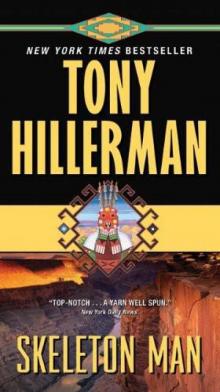 Skeleton Man jlajc-17
Skeleton Man jlajc-17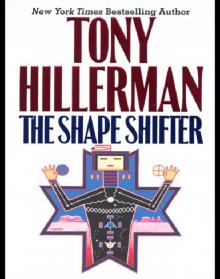 The Shape Shifter
The Shape Shifter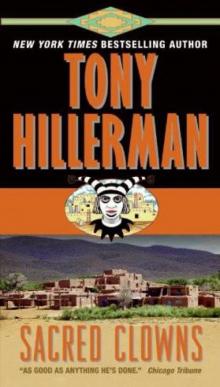 Sacred Clowns jlajc-11
Sacred Clowns jlajc-11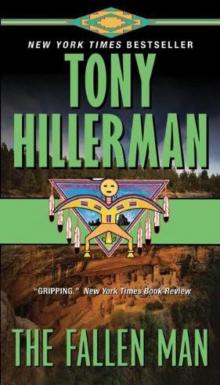 The Fallen Man jlajc-12
The Fallen Man jlajc-12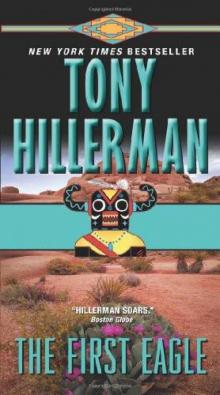 The First Eagle jlajc-13
The First Eagle jlajc-13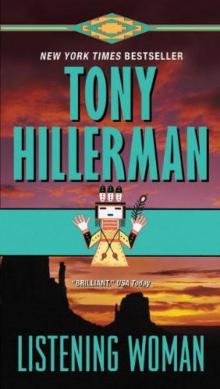 Listening Woman jlajc-3
Listening Woman jlajc-3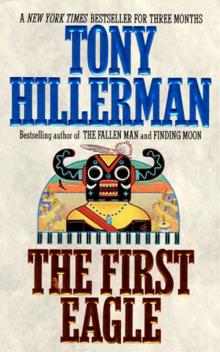 The First Eagle
The First Eagle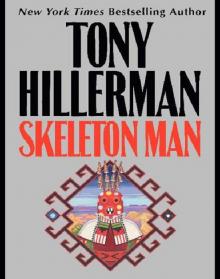 Skeleton Man
Skeleton Man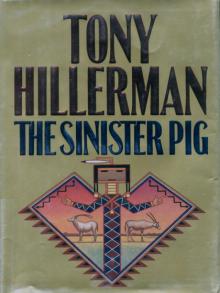 The Sinister Pig jlajc-16
The Sinister Pig jlajc-16 People of Darkness jlajc-4
People of Darkness jlajc-4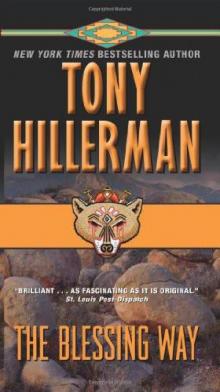 The Blessing Way jlajc-1
The Blessing Way jlajc-1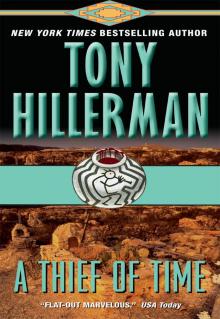 A Thief of Time
A Thief of Time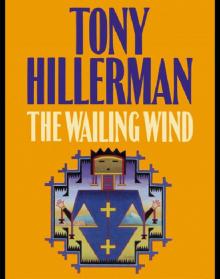 The Wailing Wind
The Wailing Wind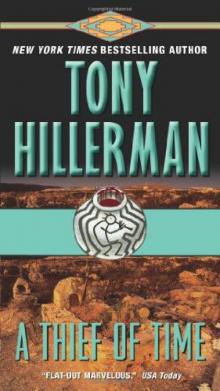 A Thief of Time jlajc-8
A Thief of Time jlajc-8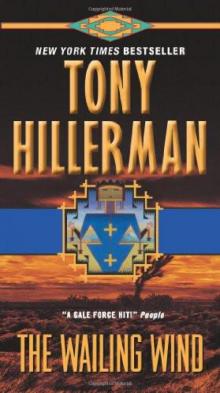 The Wailing Wind jlajc-15
The Wailing Wind jlajc-15 The Shape Shifter jlajc-18
The Shape Shifter jlajc-18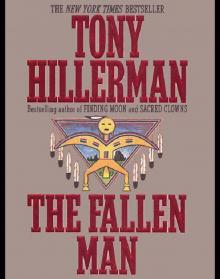 The Fallen Man
The Fallen Man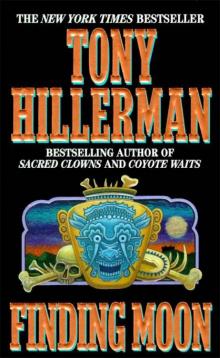 Finding Moon
Finding Moon